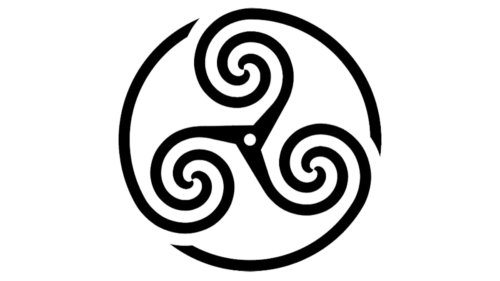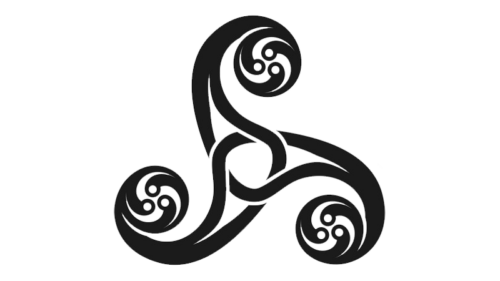Celtic symbols have fascinated historians, artists, and spiritual seekers for centuries, embodying a rich tapestry of mythology, spirituality, and artistry that speaks to the heart of Celtic culture. Among these ancient icons, symbols like the Celtic Cross and the Claddagh have transcended their original contexts to become universally recognized motifs of heritage, faith, and love. However, these symbols represent just a fraction of the intricate and meaningful artistry found in Celtic tradition. Each emblem, with its unique design and significance, offers a window into the beliefs and values of the Celts, a people renowned for their complex knotwork, intricate spirals, and symbolic representations of nature, the divine, and the interconnectedness of all things.
The Triskelion, or triple spiral, is a captivating Celtic symbol whose presence and meaning have permeated various aspects of Celtic life and beyond. Its threefold design is thought to symbolize concepts rooted in the number three, such as life, death, and rebirth, or the physical, mental, and spiritual layers of existence. This emblem, evoking the movement of life and the cosmos, has been found in Neolithic sites and ancient Celtic art, illustrating its long-standing significance.
The Isle of Man’s flag prominently features the Triskelion, symbolizing its independence and the island’s rich Celtic heritage. This showcases the symbol’s ability to represent identity and cultural pride across centuries.
The Triskelion’s meaning is as dynamic as its appearance. It is often associated with progress and competition, reflecting a forward momentum and the pursuit of personal growth and understanding. The symbol’s use has been diverse, from adorning ancient megaliths and manuscripts to serving as a motif in modern jewelry and tattoos, indicating its enduring appeal and relevance.
Features and Significance:
- Symbolism: The Triskelion represents concepts of progress, personal growth, and the integration of the body, mind, and spirit. Its three arms moving outward suggest motion, action, cycles, progress, revolution, and competition.
- Historical Use: Found in the Newgrange tomb in Ireland, dating back to approximately 3200 BC, the Triskelion is one of the oldest symbols associated with Celtic culture. It has also been used by the Sicilians and the Isle of Man, showcasing its influence beyond Celtic borders.
- Modern Relevance: Today, the Triskelion continues to inspire individuals worldwide, symbolizing life’s dynamic and continuous movement. It is a popular design in jewelry, tattoos, and logos, embodying personal and spiritual growth.
The significance of Celtic symbols, particularly the Triskelion, in today’s culture cannot be overstated. They offer not only a link to the ancient past but also a symbol of continuity and evolution in personal and collective identity. Celtic symbols, including the Triskelion, serve as a powerful reminder of the deep connections humans share with their history, the natural world, and the spiritual realm. List of Common Interpretations of the Triskelion:
- Life, death, and rebirth
- Past, present, and future
- Spirit, mind, and body
- Creation, preservation, and destruction
In exploring the depths of Celtic symbols’ meanings, we find not only artistic and historical significance but also a profound understanding of the complexities of life and the universe. The Triskelion, with its simple yet profound design, encapsulates the essence of Celtic wisdom, reminding us of the perpetual motion of the cosmos and our place within it.
Triskelion Tattoo
The Celtic Triskelion Tattoo represents a unique fusion of ancient symbolism with modern aesthetic, making it a popular choice among those seeking tattoos with deep meaning and visual appeal. This tattoo design is not just an adornment but a powerful symbol that connects the wearer to the ancient Celtic culture, embodying concepts of progress, movement, and the interconnectedness of life. The Triskelion, with its three spirals emanating from a central point, speaks to themes of growth, evolution, and the cyclical nature of the universe. It’s a reminder of the wearer’s journey through life, echoing the ancient belief in the continuity of progress and the interplay of the physical and spiritual realms.
Choosing a Celtic Triskelion Tattoo is often a deeply personal decision, reflecting the wearer’s affinity for the symbolism of the Triskelion, such as life’s ongoing flow and the balance between body, mind, and spirit. Tattoo artists who specialize in Celtic designs can offer a range of styles, from traditional to contemporary, allowing for personalization that fits the wearer’s aesthetic preferences and the significance they place on the symbol. The placement of a Triskelion tattoo can also vary, with some choosing visible areas to openly share their connection to this ancient symbol, while others may choose more discreet locations for a more personal reflection. Regardless of style or placement, the Celtic Triskelion tattoo serves as a timeless link to the past, a symbol of personal growth, and a piece of art that carries with it the mystique and wisdom of Celtic tradition.









